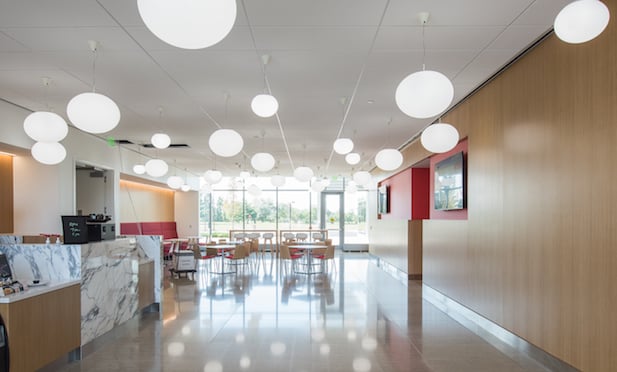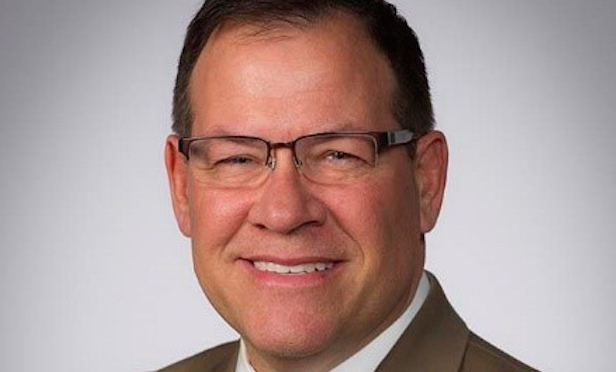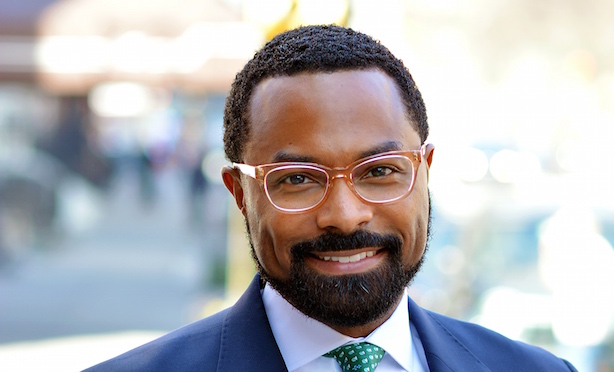 Community area inside Dow headquarters, Midland, MI
Community area inside Dow headquarters, Midland, MI
NEW YORK CITY—DowDuPont created big headlines with the Aug. 31, 2017 merger of Dow and DuPont and the subsequent plans to split into three companies focused on agricultural, materials science and a specialty products business. The material science company called Dow is expected to have $40 billion in annual revenue. But along with the favorable news, in 2015 at the time of the merger's announcement, DuPont publicly stated it was laying off 1,700 employees.
Amidst the corporate developments and challenges, the companies of DowDuPont continued to operate with Dow being the second-largest chemical company by revenue in the world in 2017.
David Day, global director of information systems and corporate facilities at DowDuPont, and Craig Robinson, CEO of global corporate services at Newmark Knight Frank, spoke with GlobeSt.com about how the commercial real estate of Dow is a critical factor in a workplace strategy that requires recruiting and retaining top talent.
 David Day, global director of information systems and corporate facilities at DowDuPont
David Day, global director of information systems and corporate facilities at DowDuPont“Don't start by apologizing because our headquarters are in a small town, Midland, MI,” says Day in describing Dow's strategy. “We're the Dow Chemical Company. Our R&D is unparalleled in the industry. If you want to work in R&D or a material science company, Dow Chemical is the pinnacle.”
But he also says when people show up, they need to have stellar facilities. Employees should not feel frustrated in trying to figure out how to get a computer, a phone, or where their office is going to be. “It's incumbent upon us to make work convenient and exciting and in the environment they need to feel productive,” says Day.
Day describes Dow as building a West Coast work experience at the Midland headquarters. Visitors looking at the office space would not be able to tell the difference between Dow and a workspace in San Jose, according to Day.
To attract millennials, Dow created open workspaces where employees can grow and get connected to the corporation. But it's not just the recruits. Dow employs men and women in their 40s and 50s with a wealth of experience and knowledge, whose ideal workspaces may differ from younger generations. Their preferences also need to be addressed. It's up to Dow to provide “different facilities that hit that sweet spot,” says Day.“You won't see expansive open cubicle farms.”
Dow provides a variety of spaces including focus rooms, conference rooms, and a cafeteria with areas for people to meet, collaborate and eat together.
At Newmark Knight Frank more than 300 people are dedicated to working on the Dow account. Robinson needs to attract and retain people who will spend time in Midland, devise ideas and be a part of implementing the changes in the company's real estate.
 Craig Robinson, CEO of global corporate services at Newmark Knight Frank
Craig Robinson, CEO of global corporate services at Newmark Knight FrankRobinson who began his career with an accounting firm, says decades ago managers had the attitude of “Build it and they will come.” The prevailing practice was to create a space, embark on a massive “change management” campaign, and force people to adapt to the office environment.
Today, the process reflects more of a “Let's observe and appreciate the way people work and build spaces around them. We can shrink wrap the real estate around people where they are. It's very different,” says Robinson. Barry Gosin, NKF's CEO, keeps a desk on the floor with the junior brokers. This access to Gosin is a strong selling point of the company and its culture, according to Robinson.
Investing in employees is essential for creating a work experience that allows employees to be their most productive and encourages them to stay. For Dow, this has included becoming self-insured and creating on-site medical clinics at the campus facilities. Dow is paying not only for its internal workforce but also covering its retiree community.
Day and Robinson agree that carefully planned workspace is essential for maximizing productivity which speeds decision making and drives innovation. “Bringing organization design together with the way you develop a facility is a big deal in the industry right now,” concludes Day.
© 2025 ALM Global, LLC, All Rights Reserved. Request academic re-use from www.copyright.com. All other uses, submit a request to [email protected]. For more information visit Asset & Logo Licensing.








